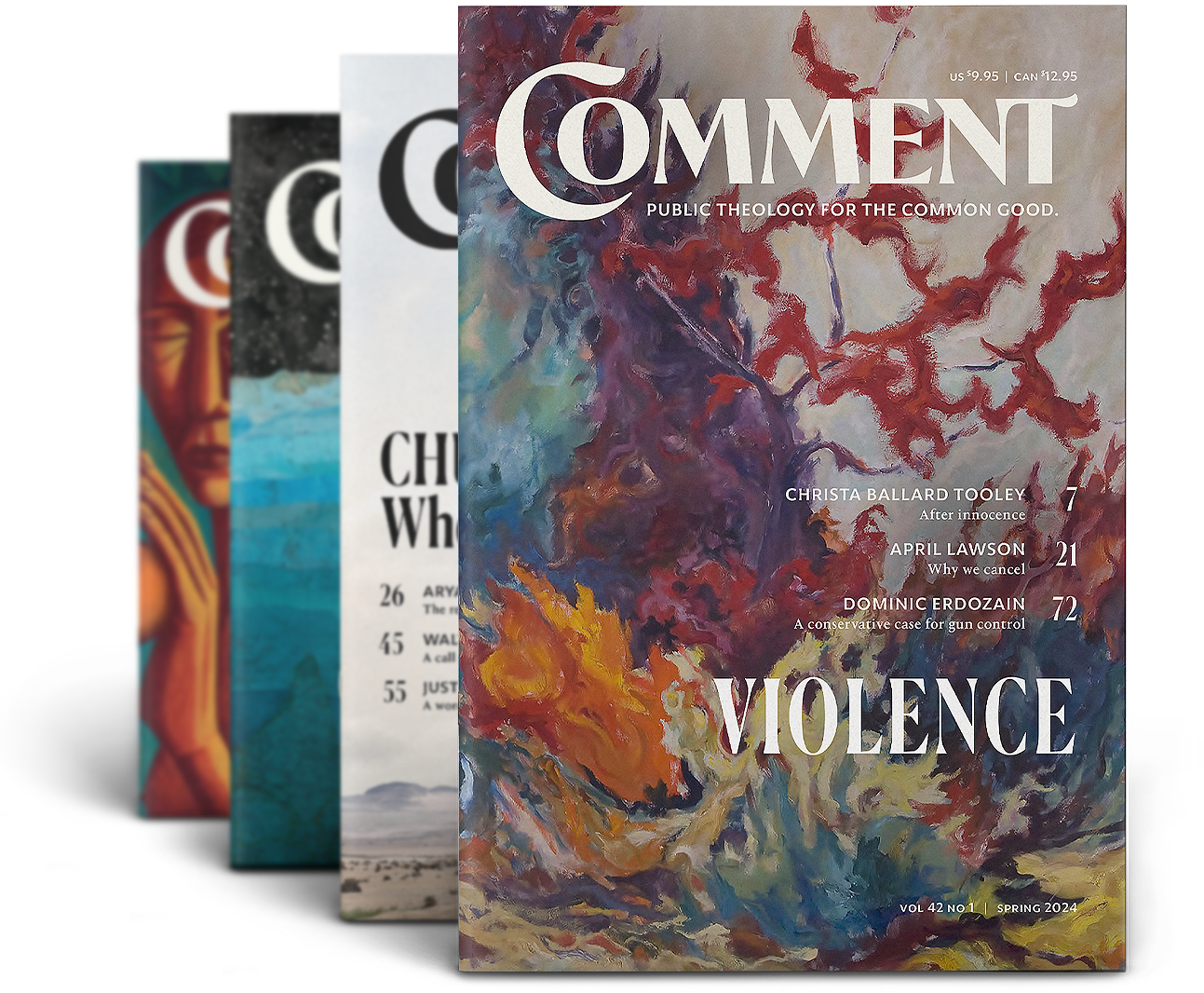I
In a durable democracy, elections are the ultimate means of resolving conflicts lawfully and peacefully. So, when a candidate refuses to abide by the results of a presidential election, when a third of the electorate believes that the election was fraudulent, and when a faction assaults the US Capitol to prevent certifying the election, these stand as warning signs that a body politic’s long-standing aches and pains have progressed to a dangerous illness. Clearer than ever is what journalists and social scientists have reported for several decades: The United States is divided—woefully and now dangerously divided.
More and more, America’s major political parties have purified their platforms and purged dissenters. More than ever, too, American citizens have sorted themselves, living near, marrying, communicating with, and visiting the news sites of those with whom they agree, clustering in bubbles, tunnels, and cocoons.
Worse, Americans have come to resent and mistrust their government and one another. Today, half of the people belonging to each party despise the other party, whereas between 1980 and 2000, despisers had hovered between 10 percent and 20 percent, according to a study that philosopher Kevin Vallier cites in his recent book, Trust in a Polarized Age. Only 17 percent of Americans expressed trust in the national government in 2019, while 70 percent did so in the 1960s, according to another study that Vallier cites. “We face a low trust future,” Vallier warns, pointing to a 2018 Pew survey showing that 60 percent of Americans between eighteen and twenty-nine do not trust other people in general, in contrast to 29 percent of Americans over sixty-five who say the same.
Polarization and declining trust are not unique to the United States. Still, the failure of one of democracy’s most prized abilities—the peaceful transfer of authority—within the world’s oldest and most influential democracy reveals these trends to be not merely problems within democracy but rather distressing signs of the illness of democracy itself.
Sensing the times, (some) political and cultural leaders speak of healing and unity, and when they do, they often turn to religion. Even at a moment when polls tell us that Americans, especially younger ones, are making for the exit doors of houses of worship, these leaders believe that social repair will require help from above and that America’s religious past might be of service.
Singer Bruce Springsteen spoke this way when he filmed a commercial for Jeep that ran during the Superbowl just two and a half weeks after the presidential inauguration had brought to a close the standoff over the election. “It’s no secret the middle has been a hard place to get to lately,” the Boss intones as the camera leads viewers into a chapel in Kansas that stands at the geographic centre of the lower forty-eight states. The commercial remains entirely in the Midwest—that is, Red states—and depicts farmscapes, diners, flags, and country roads bathed in sunrises and breezes. One frame pictures the trio of crosses that mottle rural America.
If the commercial exemplifies a religious call for unity, the public reaction to it illustrates our division. The day after the Superbowl, the ad was drowned in derision on the internet, progressives upbraiding it for speaking of unity when the times demand punity, conservatives irate that it featured an outspoken progressive rock star. Neither side was willing to view the ad as a gesture of empathy on the part of an artist who has sung about workers, farmers, immigrants, racial minorities, the quest for salvation, the Midwest, and other regions of America since the early 1970s.
Joseph Biden spoke of healing and unity in religious language in his campaign for president, promising to restore the soul of America. In his victory speech after the election, he quoted Ecclesiastes: it is “time to heal.” Republican leaders, too, have sounded these themes, Nebraska Senator Ben Sasse calling ordinary Americans to rebuild ties in their families, churches, and communities. Even President Trump called for healing and reconciliation after the Capitol assault, dubiously in light of his responsibility for it, yet testifying to the currency of the rhetoric of repair.
President Biden waxed religious in his Inaugural Address, asking Americans to “open our souls instead of hardening our hearts.” That day, Pope Francis wished him well, urging him to promote “reconciliation and peace,” while Archbishop Jose Gomez, president of the US Conference of Catholic Bishops, issued a lengthier statement welcoming his “call for national healing and unity” and appealing for “real reconciliation,” while pointedly criticizing the new Catholic president’s plans for abortion, marriage, and religious liberty.
Reconciliation in Social Policy
It is not surprising that Christian leaders speak of reconciliation in calling for restoring unity in America. The word strode into the Christian tradition through the New Testament, where it (and its close variants) appears fifteen times, thirteen of these in the letters of the apostle Paul, who uses the word to describe what God has accomplished through the death and resurrection of Jesus Christ. In his Letter to the Colossians, Paul writes that God’s reconciliation of the world through Christ includes “all things, whether things on earth or things in heaven.” All things means everything—the natural world and all dimensions of human relationship, including social and political orders. Paul then argues in his Second Letter to the Corinthians that Christians are to participate in God’s reconciliation of the world to himself by accepting a “ministry of reconciliation,” which, as he explains elsewhere in his letters, involves making peace, loving enemies, showing mercy, and forgiving. This is the mission of a Christian.
In the past generation two church leaders have stood out for promoting reconciliation in social affairs. The first was Pope St. John Paul II, who taught that reconciliation pertains to political and social life, forgave his would-be assassin, and led the Catholic Church in repenting for the sins of its long history in preparation for the Jubilee Year of 2000. The other is Archbishop Desmond Tutu, who chaired South Africa’s Truth and Reconciliation Commission from 1996 to 1998 and bestowed such a luster on reconciliation that numerous other countries took up the theme in facing their own pasts of war, dictatorship, and other large-scale injustices. The closest such effort to the United States was Canada’s own Truth and Reconciliation Commission, which faced the history of mistreatment of Indigenous peoples in its residential school system. Both Tutu and John Paul II showed how the church could bring about in modern societies what the apostle Paul taught in his letters—and what it might yet bring to a disunited United States.
The virtue that animates reconciliation is mercy. In contrast to contemporary secular liberal philosophers, who render mercy narrowly as a pardon from punishment, John Paul II taught in his encyclical of 1980, Dives in Misericordia (“Rich in Mercy”), that mercy is far wider, a restoration of all that is broken, whether through sin or misfortune. “Loud cries” of mercy, he wrote, “should be the mark of the Church of our times,” a conviction that he had acquired through living under Nazi and Communist rule in his native Poland. His proclamation of mercy’s epochal status found proof in Pope Francis’s declaration of 2016 as a Jubilee Year of Mercy, which Francis opened with a bull that echoed the words of Dives in Misericordia.
The virtue that animates reconciliation is mercy.
At the end of Dives in Misericordia, John Paul II argued that mercy is a virtue for political life. Novel and fresh, his contention finds scant pedigree in previous papal teaching and still less in modern Western political thought. John Paul II would give voice to a politics of mercy and its close cousins, reconciliation and forgiveness, again in his New Year’s Day Messages for the World Day of Peace in 1997 and 2002.
The virtue that is far more familiar to politics is justice. If the Christian church has sought to introduce reconciliation and mercy into politics in recent times, political philosophers as far back as Plato in ancient Greece, extending through Thomas Aquinas in the Middle Ages and on forward to John Rawls in late twentieth century, have proffered justice as the central virtue for the polis. So Americans far more readily pursue—and fight over—justice than they pursue reconciliation or mercy or forgiveness.
Justice is not only more familiar than reconciliation in politics but often stands in tension with it. In my study of countries who have sought to establish peace and democracy in the wake of war and dictatorship—South Africa, Germany, Chile, Rwanda—I discovered again and again a reconciliation faction pitted against a justice faction, forgiveness posed against punishment, and mercy at odds with retribution. Yet I also came across public figures, usually Christian leaders, who contended that reconciliation is not at odds with justice but rather a different way of thinking about justice. Archbishop Tutu, for instance, argued that reconciliation takes the form of what he called restorative justice.
If Tutu and his theological confreres are correct, then reconciliation might find a place far more readily in politics, where justice is naturally at home. But is reconciliation in fact justice? Westerners will find the claim bizarre. Their notion of justice finds its roots in the Roman law definition—namely, the constant will to render another his due. As this notion evolved over the centuries into the one that prevails in modern constitutional liberal democracies, “what is due” came to mean what everyone has a right to, and, in the case of past crimes, the punishment that wrongdoers deserve. If justice means something other than rights and retribution and can mean reconciliation, this meaning will have to be found in a different source. Such a source is the Bible.
Reconciliation Within Justice
In the Bible, justice means comprehensive right relationship, both between God and humanity and among humans. This is the overarching meaning of the words that vie strongest for translation into justice: tsedeq, tsedeqah, and mishpat in the Hebrew of the Old Testament, and dikaiosyne in the Greek of the New Testament. Justice is the moral order that God establishes, as the books of the Torah and the Psalms attest, and is God’s restoration of moral order after humans have sundered it. In Isaiah, tsedeq means the saving justice through which God restores Israel following its exile in Babylon, and prefigures the justice through which God saves the world through Jesus Christ, which Paul describes as dikaiosyne theou.
God’s justice establishes and gives shape to human justice, the sum total of obligations that humans have toward one another and toward God. Tsedeq means the entire law, including the commandments that God gave to Moses on Mount Sinai as well as the many precepts that Moses taught in the Torah. Dikaiosyne means the entire new law that Jesus, the new Moses, taught in the Sermon on the Mount.
English translators of the Bible have obscured this justice by rendering these terms as “righteousness,” leaving millions of Christian teenagers to sing, “Seek ye first the kingdom of God and his righteousness” around campfires. Righteousness, though, connotes personal probity and holiness but underplays the social and political dimensions of comprehensive right relationship. Translating these terms as “justice” is warranted, but only if justice, too, is understood as encompassing all of life and not merely what is narrowly legal and judicial. The Latin Vulgate, along with the Bible in Latin-based languages such as French, Italian, and Spanish, offers ample precedent for rendering the same terms through just- words (justitia, justice, justicia, guistizia), as do English translations of the Vulgate such as the Douay-Rheims Bible. Sing, then: Seek ye first the kingdom of God and his justice.
How does the Bible’s justice of comprehensive right relationship differ from the justice of rendering due? It does not reject but rather includes rights and retribution, both of which are known through the natural law. The Bible’s justice, though, exceeds what is due and encompasses obligations that exceed what people have a right to such as love, generosity, mercy, hospitality, gift of self, and love for the poor. It also encompasses responses to past wrongs that exceed what wrongdoers deserve such as forgiveness, mercy, and love for enemies. This justice reaches its climax in the death and resurrection of Christ, which also encompasses and exceeds what is due. On the one hand, Paul describes Christ’s act of salvation through metaphors that involve rendering due: debt, ransom, redemption, acquittal, expiation. He also insists, though, that salvation is a gift, something that God undertook out of love “while we were still sinners,” thus exceeding what is due. This inclusion of both what is due and what is beyond due makes biblical justice wider and fuller than the dominant Western notion.
Justice in the Bible turns out to be much like reconciliation in the Bible—the restoration of right relationship. These notions are the heart of what the Christian church can offer to our polarized polity: a holistic justice that encompasses but exceeds what is due, a mercy that restores what is broken, and reconciliation. How might this all take shape in America’s current moment?
Justice in the Bible turns out to be much like reconciliation in the Bible—the restoration of right relationship.
Irreconcilable Differences?
Pleas for the repair of America’s political life abound.
Critics of President Trump have called for the recovery of truth. Trump’s constant lies, they charge, created a post-truth environment. Media outlets such as the New York Times and CNN made it their mission to report Trump’s lies; the Washington Post kept a running tally of them. Calls for “evidence-based” policies have become common, even appearing on thousands of lawn signs, alleging that Trump trampled on science in regard to climate change and COVID-19. President Biden was bringing “truth back to American government,” announced his press secretary, Jen Psaki, at her first press conference.
Uncovering and restoring truth is a prime quest of societies rebuilding from war and dictatorship. Doubtless Trump has lied ceaselessly, reaching back to his aspersions toward President Barack Obama’s birth certificate, continuing in his inflation of the size of his inauguration crowd, running through the constant prevarications of his presidency, and reaching a peak in his reckless rejection of the 2020 election results.
The rampant purveying of falsehoods in America, though, did not begin with Trump. While politics has always known lies, today’s new technologies and modes of communication—mass mailings, advocacy over the internet, niche media markets—create new incentives for putting forth half-truths, distortions, unsupported claims, and outright falsehoods. Yet beyond these pressures and the steady stream of sullied utterances that they elicit, particular grand falsehoods have come to pervade public life in recent decades. For instance, news outlets, including today’s decriers of Trump, as well as college professors, school teachers, public officials, movie and television-show producers, and ultimately, the United States Supreme Court—and parallel institutions in other democracies—together have asserted thousands of times that two men or two women can be married. These assertions may not be strictly lies, for their utterers hold them to be true and thus intend no deceit. Why they are falsehoods nonetheless requires more argument than is possible here—the very plight that points to our predicament. Virtually yesterday on the timeline of history, thousands of influential voices began proclaiming something to be true that negated what every civilization—and every Christian church—had regarded as self-evidently and foundationally true up until that day. Does not such an astonishing sweep and abruptness lay waste to a society’s ecology of truth? In like manner, even today’s most ardent champions of evidence ignore the vast consensus of scientists—96 percent of a sample of 5,577 biologists, according to one study—that life begins at conception, a denial that has undergirded the killing of over 60 million unborn children. Repairing the ecology of truth is essential for restoring right relationship in the political order, and will require far more than Trump’s exit.
Another proposal for repair is punitive justice—meting out what is due. Following the 2020 election, and even more so after the assault on the Capitol, calls for retribution well exceeded impeaching and trying Trump in Congress. They included lustration measures resembling those of Eastern Europe after the fall of communism and Iraq after the overthrow of Saddam Hussein, which debarred complicit officials from holding public and private leadership positions. MSNBC’s Joy Reid called for the “de-Ba’athification” of the Republican Party; an ABC News story recommended the “cleansing” of Trump’s movement and then edited out this word, associated with killing minorities, when controversy arose; a Forbes writer called on companies not to hire Trump officials; faculty at Harvard demanded the revocation of their degrees.
Just punishment has its place, and Trump may well merit sanction for his incitement of the assault on the Capitol. Collective punishment, treating members of the opposite party as outlaws, not opponents, though, will not restore our politics. Payment will beget payback in the form of punitive pursuits every time the presidency changes party hands, and our divisions will combust. Where does it end?
In the view of far more Americans, fixing politics simply means ending injustices through securing the rights of one or another set of persons: African Americans and other minorities, unborn persons, immigrants, transgender persons, refugees, women, Christians who want to live their faith freely, and human beings insofar as they benefit from a clean and stable natural environment. Rights, what is due to everyone, are integral to justice. Rights are overused, invoked for any and every cause, and rights are often misused, severed from genuine human goods. But when they are genuine, rights protect human dignity and are thus essential components of right relationship in the political order and merit being incorporated into reconciliation.
Protecting rights alone, though, will not end our polarization. They are the very bones of contention in our politics. Further, a justice limited to rights stunts virtues and practices that elicit goods that rights alone cannot deliver—strengthening social ties, healing wounds wrought by injustice, making peace among enemies, providing care, alleviating vulnerability, and advancing flourishing and friendship in many other ways. Justice as due is unduly truncated. A wider, fuller justice, one that incorporates what goes beyond due, would make political proposals and platforms, including their commitments to rights, appealing to a far wider consensus of citizens. In this way, the Bible’s justice of right relationship, its reconciliation, can help to heal the land.
Consider abortion, the most polarizing issue in American public life. The late Richard John Neuhaus’s line from his great pro-life speech of 2008, that every unborn child be “protected in law and welcomed in life,” expresses what is both due and beyond due. The full legal protection of the human right to life is due to every unborn person, who possesses dignity on account of being made in the image and likeness of God. That is non-negotiable.
This protection alone, though, will not eliminate the conditions that lead to abortion, heal the widespread wounds that abortion has inflicted, or even end the procurement of abortion. The chemicals that bring about medication abortions, now 41 percent of all abortions, likely will remain easy to obtain. Even should Roe v. Wade be overturned and laws prohibiting abortion be passed in many states, counterefforts will be made to codify abortion rights in other states and even on the national level, as Biden has supported.
Welcoming every unborn person into life will require a justice that does more than restore rights. It will require care and mercy of the sort that over two thousand women’s care centres around the country extend to pregnant women, empowering them to overcome fear and choose life with extraordinary rates of success. Given the typical poverty of women who procure abortion—some three-quarters are low income and more than eight in ten are unmarried—the virtues of care and mercy also call for law and policies that will provide support in paying the costs of birth, health care after birth, child care, pregnancy leave, reforms that make adoption more affordable and attractive, and more aggressive efforts to collect child support from birth fathers.
A restoration of reverence for life and care for the vulnerable is needed so that pregnant women will be cared for, rather than coerced through, the network of relationships that surrounds their decision for life, one that includes the birth father, family members, her doctor, and others. Making the case for life requires a love of neighbour, even of enemies, that exhorts and persuades and shuns inflammatory words and images. Hope, healing, and forgiveness, the three terms that appear on the home page of Project Rachel, a ministry for post-abortive women, are needed to salve the wounds of abortion in a country where about one-third of women have had abortions. Forgiveness contrasts most sharply with the justice of rendering due. Jesus teaches his followers to forgive others their debts on account of God having forgiven their debts. Jesus’s forgiveness does not merely cancel debt but is part and parcel of the action through which he restores us.
All of these strands of restoring right relationship, of reconciliation, are variously practiced or supported by advocates for life in the United States today. Integrated, amplified, and tethered to the right to life, they compose a justice that stands the best chance of widening the consensus on ending abortion.
What does the justice of right relationship bring to race, another issue that involves the denial of justice to an entire class of persons and that divides America more than at any time since the marches and riots of the 1960s?
What is due, again, is indispensable. Racism is in essence a denial of the respect due to a person’s dignity. Due is at the core of claims about structural, or systemic, racism, holding that African Americans are treated unfairly in buying or selling a house, opening a bank account, gaining employment, and being pulled over by police officers, and that they are underrepresented economically and professionally and overrepresented in crime, incarceration, and out-of-wedlock births. These disparities are not explainable apart from racism, sociologists such as Michael Emerson, George Yancey, and Brandon Vaidyanathan have concluded upon assessing a wide range of empirical studies. Due is what many saw fulfilled in the trial and conviction of Derek Chauvin, the police officer who killed George Floyd on May 25, 2020.
The United States has seen progress in rendering due, most prominently through the Civil Rights Act of 1965. Yet, even if all remaining racism were to be eliminated, fairness and equality restored, and due delivered, reconciliation would not be achieved. Today’s disparities are not the result of a misfortune such as an earthquake, or of impersonal historical forces, but rather of gargantuan injustices—massive slavery, colossal Jim Crow, and racist laws and policies on national, state, and local levels in the middle portion of the twentieth century. These injustices have left behind not only racial disparities but also a moral legacy—what can be called the standing victory of injustice. Unless and until a wrong is authoritatively repudiated, it persists as unfinished business, a rupture in right relationship.
These injustices have left behind not only racial disparities but also a moral legacy—what can be called the standing victory of injustice. Unless and until a wrong is authoritatively repudiated, it persists as unfinished business, a rupture in right relationship.
Repudiation might take the form of an official national apology or reparations. Americans today disfavour these measures, polls show, objecting that they are not perpetrators and that many African Americans are not direct victims of racist deeds, and still less of slavery. They voice the justice of due and claim to owe nothing.
Their objection, however, envisions wrongs as individuated and historically isolable and fails to see that wrongs are also collective and that their resultant wounds persist over time. Slaves, victims of lynching, and recipients of invidious discrimination in housing, education, and public policy suffered not simply from masters, Klansmen, and officials but also from the laws, policies, and mores of an entire society. The wounds from these injustices are passed down over generations and live on in memory, just as they have lived on in Canada, Northern Ireland, Kashmir, Bosnia, Rwanda, Germany, Spain, Israel and Palestine, Japan’s relationship with Korea and China, and so many other settings. While today’s citizens may bear little direct and personal responsibility for these wounds, they are nonetheless members of the society at whose hands and in whose name the wounds were wrought. Thus, in the present day, a person who speaks authoritatively for a collectivity may renounce the injustice, at least insofar as it was perpetrated through laws, policies, and other collective measures. Admittedly, it is not always obvious who speaks for the guilty collectivity or for the victim group, or easy to determine how much is owed or what sort of payment is called for, especially as the wrongful event recedes further into history. That historical justice is inexact, though, does not mean that it is impossible, though it points to the difficulty of its being described in the language of due. The quality of such justice is measured not so much in the exactitude of proportionate restitution as it is in the effectiveness of messages and policies in restoring right relationships among the heretofore estranged.
Theologically, the collective dimension of guilt can be understood though a national covenant, as explained in a recent volume of essays on race edited by theologian Gerald R. McDermott. God makes covenants with nations, McDermott explains in his introductory essay, by which he relates to them corporately according to their righteousness, sin, and repentance. While Israel is the prototypical example, for centuries Christians in Europe and the United States viewed their countries as bound by a covenant, right up to the past generation, when the idea has encountered wide skepticism. In the United States, Abraham Lincoln, Martin Luther King, and, most vocally, Frederick Douglass viewed the country as liable to divine punishment for slavery and racism yet capable of redemption through collective repentance.
Such remediation can and does take place. In the past generation, a global wave of official political contrition has seen presidents of the Federal Republic of Germany apologizing for Nazi crimes, the prime ministers of Australia and Canada for mistreatment of aboriginals, US presidents for the internment of Japanese Americans during World War II and for the Tuskegee experiments against African Americans, and leaders of various Christian churches for historical misdeeds. In many of these cases, reparations accompanied apologies.
Some argue that the United States as a nation has atoned for its sins through the civil war, much as President Lincoln argued in his Second Inaugural Address of 1864. This atonement, though, leaves unaddressed the United States’ subsequent history of racism, which it has not addressed authoritatively, explicitly, and definitively, and could address through an official apology and reparations. Expressing, formulating, and carrying out such measures will require consummate leadership and ought to be done in active collaboration with African American leaders.
Apology and reparations might then lead to the action that most vividly exceeds what is due and dramatically restores right relationship: forgiveness. In responding to an apology, African American political, religious, and civil-society leaders could extend forgiveness, inviting their followers to do the same. Many have already taught forgiveness, most memorably Martin Luther King Jr. and Frederick Douglass. Practitioners of forgiveness would be not only foregoing resentment but also contributing to healing the nation.
Apology and reparations might then lead to the action that most vividly exceeds what is due and dramatically restores right relationship: forgiveness.
While the nation’s divisions will not disappear soon, the biblical justice of right relationship puts forth a vision of repair that may widen the sphere of consensus on the legitimacy of America’s democracy. Progress is uncertain and reversible, yet other democracies have shown that honest national debates about past injustice can increase the moral unity of the citizenry. The Federal Republic of Germany’s public debate about its Nazi past in the 1980s; the widely publicized hearings of South Africa’s Truth and Reconciliation Commission of 1996 to 1998; Canada’s Truth and Reconciliation Commission of 2007 to 2015; and the Chilean government’s apology, reparations, and revelation of the truth in the early 1990s following the Pinochet dictatorship all stand as evidence. The prospects for consensus are strengthened by the inclusion in such efforts of persons from diverse religious and philosophical traditions who share in the ends and practices of reconciliation. Still, the Christian church plays an irreplaceable role in this reconciliation, not because it lacks a blemished past but rather because it embodies the author and artist of the reconciliation of all things.






